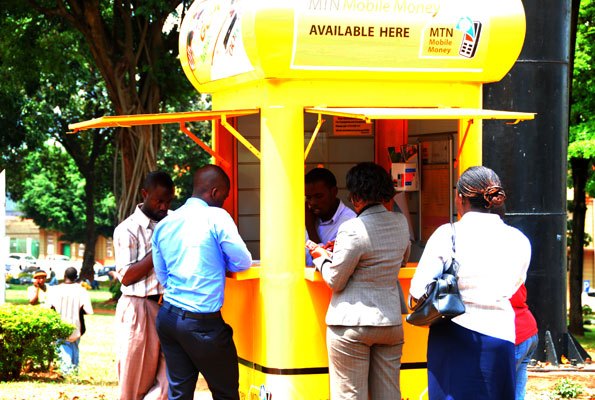Nigeria might be Africa’s largest economy, but when it comes to financial matters, people typically favour cash payments over technology. Despite high mobile penetration, only 6% of the population uses mobile phones to make financial transactions.
According to BBC.com, 60% of Nigerians still do not have a bank account, so they don’t have access to digital services on offer. In contrast, 73% of the population in Kenya have a mobile payment account. Paga, one of Nigeria’s biggest mobile money operators, operates multiple kiosks in Lagos, particularly in neighbourhoods where the nearest bank or working cash machine is simply too far away.
Every day, streams of customers visit the kiosks to pay their bills and transfer money by handing over cash, instead of using Paga’s mobile app. Cash transactions continue to dominate, partly driven by a huge informal sector excluded from financial services. Although many people in Nigeria now have a mobile phone, some say they don’t trust the technology.
They fear that if the device is stolen, their money will be too, so they prefer to handle all transactions in person. This isn’t just Nigeria or any other African country, we also experience such even in our Kingdom of Eswatini. MTN and Eswatini Mobile both have a Mobile platform introduced (Mobile Money and eMali).
Opposition from banks
According to Paga and other sources, another reason for African’s cash dependency is that banks and telecoms providers don’t want technology start-ups moving in on their turf. Plus, until 2017, regulations meant that you couldn’t transfer amounts over $10 without submitting a paper document mostly in Nigeria.
“The mobile operators in Nigeria were blocking us from actually having access to their networks because they wanted to be the ones to offer mobile money,” Paga’s founder chief executive Tayo Oviosu told our source the BBC.
“In 2017, we finally got access, and I think the story of mobile money is going to pick up over the next few years.” Meanwhile, in Kenya, 45 million mobile money accounts were registered by the end of 2018, according to the Central Bank of Kenya.
The leading mobile money wallet service there is M-Pesa, which was set up in 2006. People use the service to send money from their mobile phone to other account holders, as well as to pay bills and take out loans.
According to M-Pesa’s creator Safaricom, the service now has over 21 million active users carrying out more than 17 million transactions a day. The telecoms provider, owned by Vodafone, now wants to offer M-Pesa to the rest of the continent, but there is resistance to mobile payments from some African nations.
“The reason you find it has failed [in some African countries] is that the banks are really good at lobbying against competition,” Safaricom’s chief executive Bob Collymore told our source the BBC.
“It’s a bit short-sighted because if you look at Kenya, the banks that really work are the ones that work with M-Pesa. “We don’t really see ourselves in competition with banks, we see ourselves in competition with cash.”
Back at home, we seem to be moving towards our Kings Vision, that by 2022 our country should be listed amongst the developed countries in the world. For instant, MTN Eswatini’s MoMoPay has grown by 201 per cent in December 2018. In November last year, the product accrued E262, 835 income which shot up to E791, 836 by the close of December. This represents an increase of E529, 001 which translates to 201 per cent.
From September to October, MTN Eswatini’s flagship product grew from E163, 560 to E171, 445, which represents a growth of 4.82 per cent. And, between October and November, the product picked up by 53.31 per cent.
This improvement on the basic Mobile Money launched in 2011 means that MTN’s valued customers don’t need to go through a long menu to pay for goods and services. All they need to do is “tap and pay” – which means pat their MoMo pay stickers against point of sale (PoS) machines, and closing the payment process by punching in their personal identification number (PIN).
To date, MTN Eswatini Mobile Money is accepted in over 500 different outlets, which includes selected schools. This payment method has improved convenience for parents who use it for payment of fees.
Last year, for instance, MTN Mobile Money was used by parents, for the first time, to pay fees in about 15 pilot schools. The successful pilot saw some of the school collecting over E120, 000 in fees, conveniently deposited by parents in the convenience of their homes, or place of work.
We believe that mobile payment is what everyone should switch to and get advanced in a way not to fear technology and improvement as this is one initiative to make our lifes easy, save time and also stay up to date with what is happening around.
